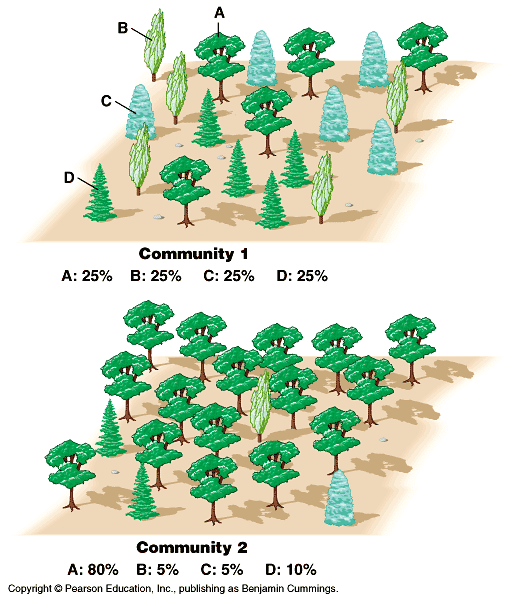How do species richness and relative abundance of species affect species diversity?
1 Answer
Species richness and relative abundance are the two factors that are considered when measuring species diversity.
Explanation:
Species richness and relative abundance are the two factors that are considered when measuring species diversity. Species richness refers to the number of species in an area. Species abundance refers to the number of individuals per species. Relative species abundance is how common a species is relative to the other species in a defined location.
For example, in the image below, we can see that these two communities are composed of the same species and are identical in regards to species richness. They have four different species of trees. However, they differ in regards to relative species abundance:

Community 2 is mostly composed of species A. Species A has high relative species abundance compared to species B, C, and D. If we look at Community 1, each of the four species contributes to 25% of the population. The relative abundance of each species is more evenly distributed than Community 1.
While both communities have the same species richness, Community 1 would have greater diversity due to the relative abundance of each species present.
To conclude, the number of species factors into species diversity but also the number of individuals in each species is also considered. Both affect species diversity.

